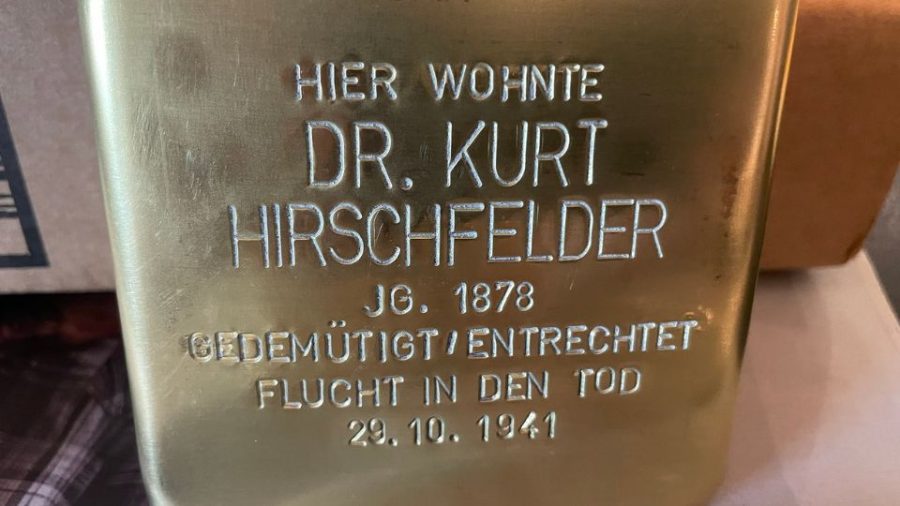Understanding “The Stolpersteine Project” and its amazing effect on 3 St. Louis families
Published November 22, 2022
The world’s largest decentralized memorial commemorates the lives of people deported by the Nazis before and during the Holocaust. The Stolpersteine Project was conceived by German artist Gunther Demnig. It consists of 75,000 stolpersteine (stumbling stones) in 28 countries, primarily in Europe. The square, 4-inch stones are laid in the pavement in front of the last known place of residence of victims of the Nazis. Their names are engraved on a brass plaque on top of each stolpersteine.
Requesting a stolpersteine is not complicated, but it does require some work. Permission must be obtained from local authorities and the property owner of the residence. Demnig’s foundation requires careful research to assure accuracy. It also insists on finding living descendants before a stolpersteine is installed.
The Jewish Light discussed the significance of stolpersteine with three Jewish St. Louis descendants of Holocaust victims and survivors who traveled to Germany to see the commemorative stones.
The pediatrician
Kent Hirschfelder, a docent and former board chair at the St. Louis Kaplan Feldman Holocaust Museum, is a student of history, but he knew little about stolpersteine. He was quite familiar with the achievements of his great-uncle, Isidor Kurt Hirschfelder, a pediatrician in Krefeld, Germany. That’s because a pediatric hospital is named for him. So is Hirschfelder Strasse, a residential street, and a school and a plaza.
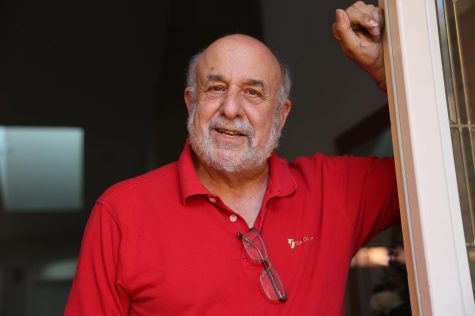
“He was revered in the community,” said Hirschfelder, a member of Congregation Shaare Emeth. “He was a mensch. He would see patients after he was forbidden to see gentiles. They would sneak out to him at night because he was such a good person, and he wouldn’t charge them if they couldn’t pay. He invented the birthing room for mothers. He probably survived until 1941 because he was revered.
“He also served in the German army in World War I. He was on the front lines and decorated with the Iron Cross. And on Oct. 27, 1941, a gentile woman patient came to him and said, ‘The last transport out of Krefeld is tomorrow. I’ve seen your name on the list. My husband is in the Gestapo, and I’d be in a whole lot of trouble if he knew I was here.’
“So Isidor put on his World War I uniform, he put his Iron Cross around his neck. He took the weapon that he had used to defend his country and he took his own life.”
The stolperstein bearing Isidor Hirschfelder’s name and street address also states: flucht in den tod (suicide). It’s a stark reminder that nobody was protected from the Nazi regime, not even a respected physician. In 2009, Kent Hirschfelder visited his great-uncle’s stolpersteine outside his last known address, Ostwall 148. The former private home is now a dress shop.
The stolpersteine controversy
Isidor Hirschfelder’s former Krefeld home is now on a busy commercial street with pedestrians looking into retail store windows for sale items. They likely aren’t walking down Ostwall Street in search of Holocaust memorials embedded in the sidewalk. The placement of stolpersteine makes some people uneasy. By walking on the stones, it could be interpreted as a sign of disrespect. That’s why Munich authorities decided to ban the installation of stolpersteine in the city in 2004.
On the other hand, the engraved brass plate is distinctive and eye-catching, so even people who aren’t familiar with the memorials may stop and look down. To read the engraving requires one to bend over slightly. That act of bowing down could also be read as a sign of respect. For Kent Hirschfelder, stolpersteine memorials represent a good way of making sure people don’t forget about Nazi atrocities.
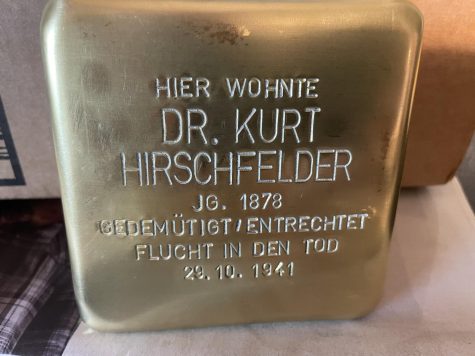
“I’m absolutely in favor of anything that reminds people,” he said.
Denny Greenberg also has a positive view of stolpersteine. Her great-grandmother, great-aunt and great-uncle are memorialized in stolpersteine in Krefeld.
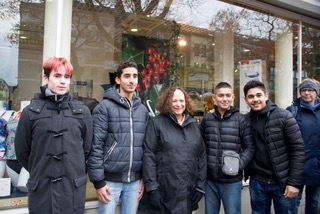
“We met the artist because he actually did the laying of my great-grandmother’s stone, and he likes people to walk on them because he says it polishes them,” said Greenberg, a member of Congregation B’nai Amoona. “People in the community also come and polish them and take care of them.”
Denny and her husband, Carl, first went to Germany to see her family’s stolpersteine in 2019. They returned this summer. Greenberg now consciously looks for stolpersteine when traveling. She said her trips to Krefeld have been particularly moving.
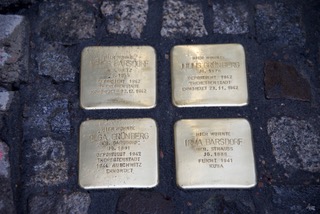
“It was very touching,” she said. “There were several stones, several ceremonies taking place. One was for my family, one for a homosexual person, one for a young child that had a disability who was killed because of that, another was for a resistance fighter. So there was a lot going on that day. What was interesting is, in this community, the local historians work with high schools, and the students actually perform the dedication ceremony.”
Like the stone for Isidor Hirschfelder, Greenberg’s family stolpersteine is embedded in front of a storefront.
“My great-grandmother had a fabric business,” she said. “She and the family lived above the business. When the Nazis came, they took it over and it became a Judenhäuser (a building where Jews were housed).
“I learned so much about my family from the historians, and I had the opportunity to talk to a lot of the people in the community, and most of them were not Jewish. Most of them were doing it because they found out members of their family were in the SS, and they didn’t want history to repeat itself, and they had the sense of collective guilt.”
A pilgrimage
In July, Marian Steen and 13 family members traveled to Bensheim, Germany, to commemorate her grandmother Anna Hochstadter’s stolpersteine. The trip began when Steen received an email from a high school teacher.
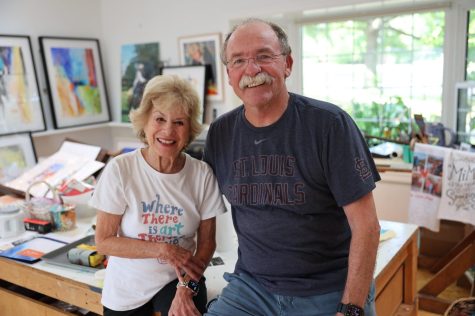
“He was a history professor at my mother’s school, and he had all kinds of information about her,” Steen said. “He said they wanted to give her and her family a stolpersteine. He introduced us to the student that he assigned our family to. This was a history project for his class in my mother’s school to celebrate 150 years of the school’s existence.”
Steen said the journey to Bensheim was well worth the effort. It deeply affected her and her family.
“The minute I heard about how sincere these people were and what their purpose was, I knew that we would all have to try and save our money and get over there,” she said. “After we got back, my youngest grandson, Liam, who is 12, wrote an email to the history professor who started the whole thing and said, ‘Thank you for letting me have a picture in my mind of these people who were my great-grandparents and my grandmother.’
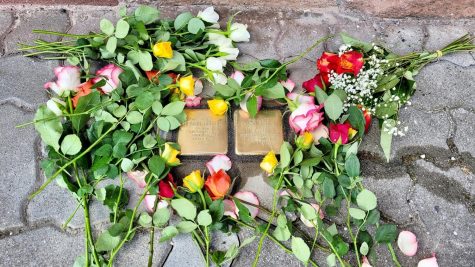
“One man drove us over to my mother’s home that she lived in and showed us the exact stolpersteine. They invited us to come into the house and be in the actual living quarters where my grandparents lived. I looked out the window that my mother must have looked out as a child. It was a pilgrimage. It was just an amazing thing.”



